Rahul Guleria
SEO Executive
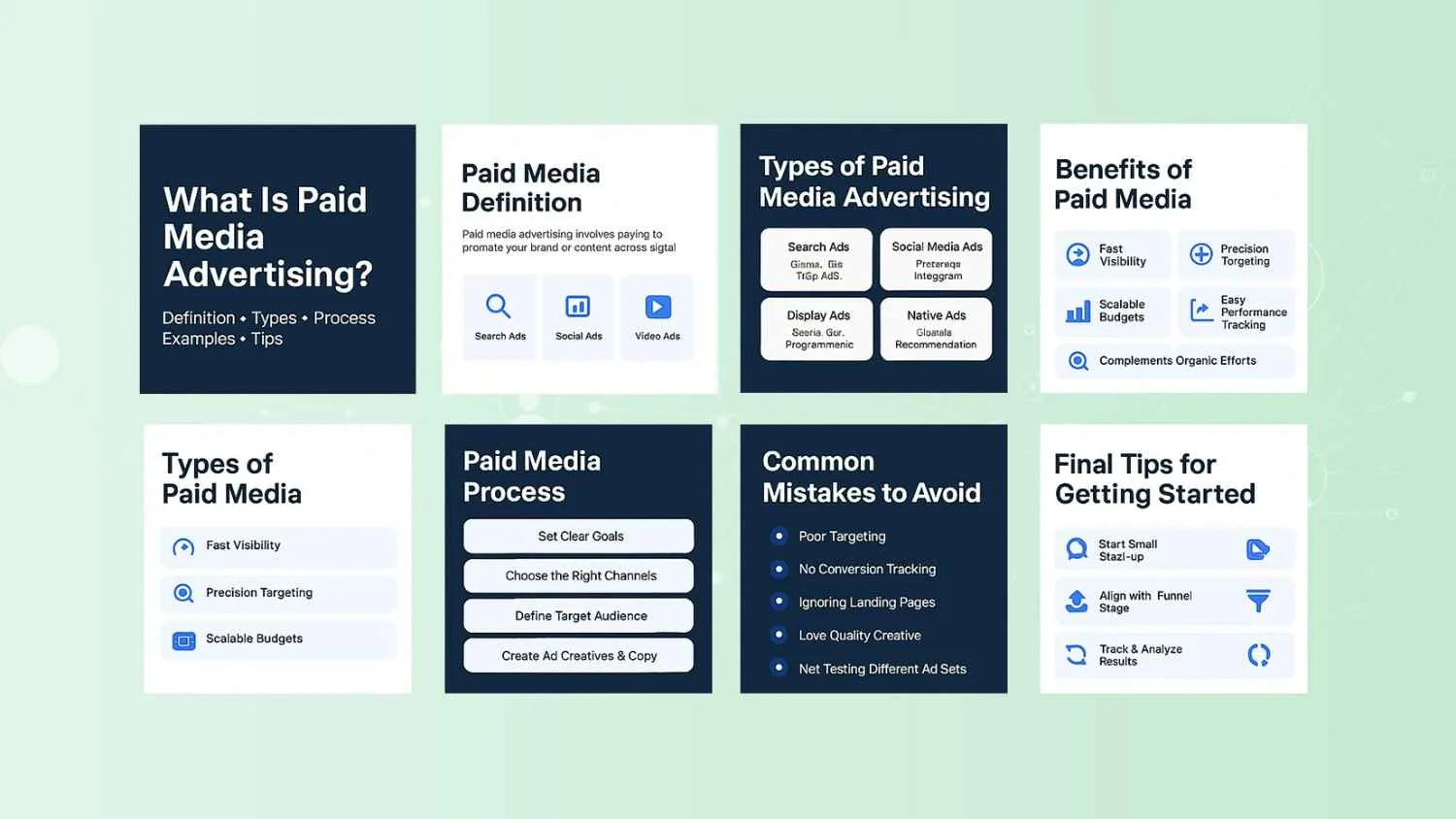
Marketing, at its simplest, is about communication. It’s how a brand, business, or individual gets a message in front of an audience—and convinces them to act. But this communication doesn’t happen in a vacuum. It needs a channel. A delivery system. That’s where the media comes in.
In the context of marketing, media refers to the platforms, spaces, and tools used to deliver a message to an audience. It could be a paid banner ad on a high-traffic website, a blog post on your company's website, or a product review on a YouTube channel. Every interaction you have with your audience—whether you control the message or not—is mediated through one of these channels.
Think of media like the roads of a busy city. Some are free, others are toll roads, and some you can’t control at all—but they all lead somewhere. The goal of a smart marketer is to know which road gets their audience to their door the fastest and most efficiently.
Media isn’t just a monolith. In marketing, it’s commonly broken down into three categories: Paid Media, Owned Media, and Earned Media. Each plays a different role in a well-rounded digital strategy.
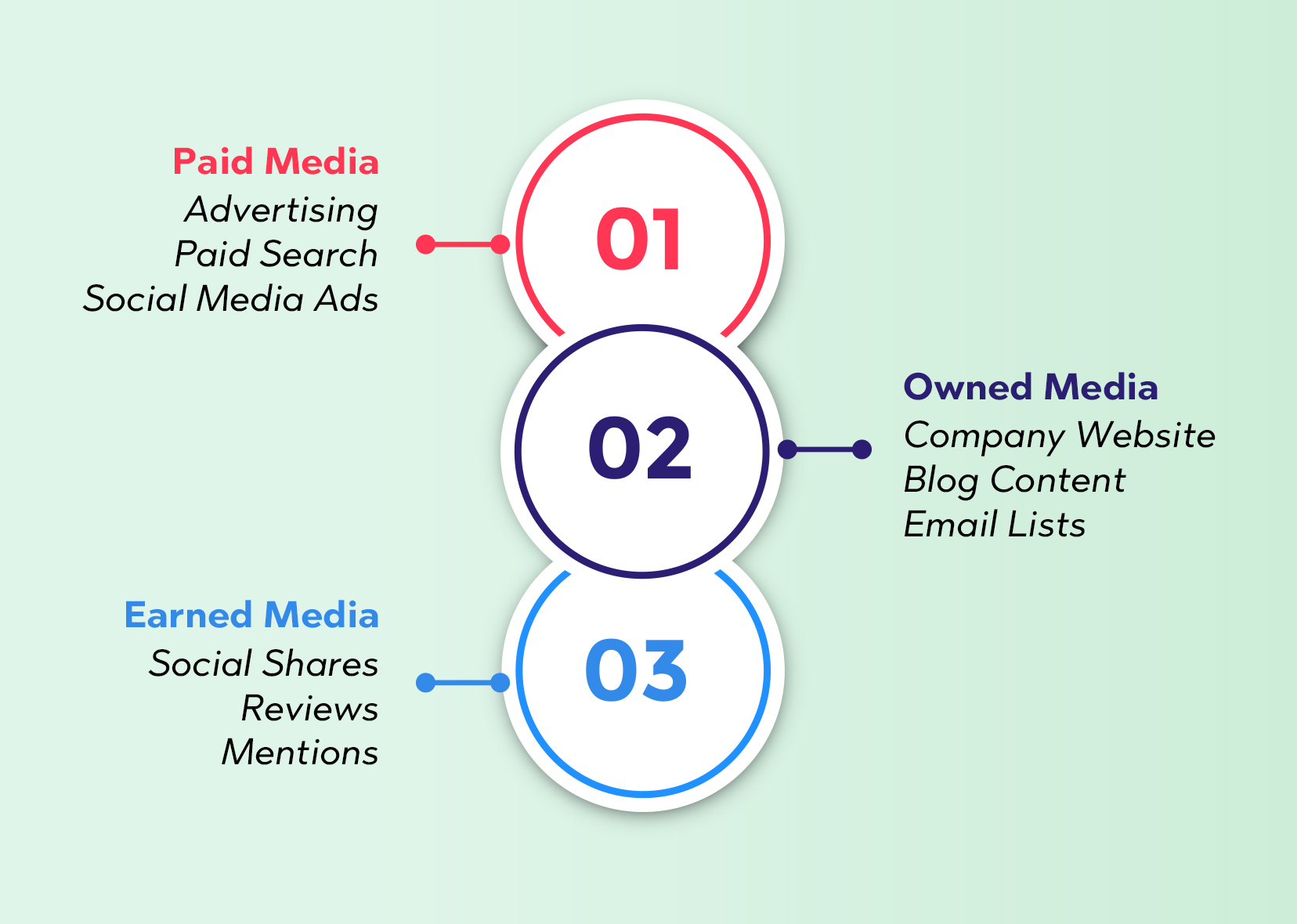
This is any form of advertising that you pay for to promote your business. Think Google Ads, sponsored posts on Facebook, influencer partnerships, or display ads on news sites. It’s immediate and scalable—but it costs money.
These are the channels you control. Your website. Your blog. Your social media profiles. Even your email list. Owned media is where your brand lives and grows long-term. It requires time and effort but builds equity.
Earned media is the digital equivalent of word-of-mouth. It’s when others talk about your brand without you paying them—reviews, shares, mentions, backlinks, and PR coverage. It’s valuable but unpredictable.
So, where does paid media fit? Picture your brand as a party host. You’ve got a beautiful venue (your website), an amazing menu (your products or services), and a killer playlist (your content). But if no one knows where the party is happening, what’s the point?
That’s what paid media does. It sends out the invites. It gets people in the door.
While owned media builds authority and earned media builds trust, paid media builds reach. It lets you break through the noise and get noticed in crowded digital spaces. And unlike the slower paths of SEO or social shares, paid media works fast. You flip the switch, and boom—your ad is in front of thousands (or millions).
Let’s talk numbers. As of 2025, the global digital advertising market is valued at over $600 billion, and it continues to grow. That tells you two things:
Here’s why paid media is no longer optional—it’s essential:
SEO is powerful, but it’s a slow game. Paid media gives you instant exposure. Your message shows up exactly when someone is searching for a solution—on Google, Instagram, YouTube, or any channel you choose.
Modern paid media platforms let you target by demographics, behaviors, interests, and even intent. Want to show an ad only to CFOs in tech companies who visited your pricing page in the last 7 days? You can.
You control the budget, the creative, the message, and the timing. If something’s not working, you can pause or pivot fast. That kind of control is a huge advantage compared to more organic or earned strategies.
Paid media doesn’t work in isolation. It reinforces your organic and earned efforts. For example:
● Promote a blog post with a LinkedIn ad to drive early traffic.
● Retarget visitors who read your blog but didn’t convert.
● Use paid social to boost engagement on new video content.
Imagine a new health supplement brand launching a product line.
● Owned Media: They have a solid website and blog.
● Earned Media: A few fitness influencers mention them.
● But traffic is still low. They launch a Google Search campaign targeting keywords like “natural energy supplements” and “best nootropics for focus.” Within 24 hours, they see targeted traffic, leads, and a spike in sales.
That’s the power of paid media.
Some brands attempt to bypass paid media and focus solely on organic. While this might save money upfront, it often comes at a cost:
And let’s be real: algorithms change. Social reach gets throttled. Organic traffic dips overnight. Paid media provides a stable, predictable stream of traffic and conversions you can count on—if you know how to use it right.
Honestly? Sooner than most businesses think.
If you’re:
● Launching a new product or service
● Entering a competitive market
● Trying to grow brand awareness quickly
● Testing new messaging or offers
● Retargeting website visitors to boost conversions
…then paid media can jumpstart your growth.
You don’t need a six-figure ad budget. Many platforms let you start with just a few dollars a day and scale from there.
Paid media isn’t about throwing money at ads and hoping something sticks. It’s about using targeted, strategic campaigns to get your brand in front of the right people, at the right time, with the right message.
It works best when it’s part of an integrated digital strategy that includes owned and earned media. But when speed, scale, and control matter most? Paid media is your ace.
Paid media advertising is a form of digital marketing where brands pay to promote their content, product, or services across third-party platforms. This includes search engines, social media, websites, apps, influencers, and more.
In plain English: you’re paying to get seen.
Unlike owned or earned media, paid media guarantees placement. You decide what the message is, where it appears, who sees it, and when. From a promoted tweet to a full-blown programmatic video campaign, if money changes hands for visibility—that’s paid media.
And it’s more than just ads. It’s about strategically investing in visibility that drives traffic, conversions, and ROI.
Let’s break down the engine behind a typical paid media campaign.
Every campaign starts with a goal:
● Do you want more traffic?
● Need qualified leads?
● Pushing for purchases?
● Building brand awareness?
Each objective shapes how you build the campaign.
Different platforms serve different purposes:
● Google Ads: Great for intent-based targeting.
● Facebook & Instagram Ads: Excellent for visual storytelling and retargeting.
● LinkedIn Ads: Perfect for B2B targeting.
● YouTube: Ideal for brand awareness via video.
● Programmatic Display: Broad reach with automated placement.
Your audience determines the platform.
Targeting is where paid media really shines. You can focus on:
● Age, gender, location
● Interests and behaviors
Job title, company size (for B2B)
● Previous actions on your website (retargeting)
● Lookalike audiences based on your best customers
This level of precision is what makes paid media advertising so effective.
Depending on the format, you’ll need:
● Headlines and ad copy
● Images or video
● Call-to-action buttons
● Landing pages
Creative needs to align with the intent and platform.
Paid media isn’t “set and forget.” You monitor performance metrics like:
● Click-through rate (CTR)
● Conversion rate
● Cost per click (CPC)
● Return on ad spend (ROAS)
Then you adjust: tweak headlines, switch out creatives, and test new audiences. That’s where the magic happens.
A well-crafted Paid Media Advertising Process doesn’t operate in a silo. It aligns with where your audience is in the funnel:
Stage | Paid Media Tactic |
|---|---|
Awareness | Display Ads, Video Ads, Sponsored Content |
Consideration | Retargeting, Native Ads, Social Ads |
Conversion | Search Ads, Lead Gen Forms, Product Ads |
Retention | Loyalty campaigns, Upsell Ads |
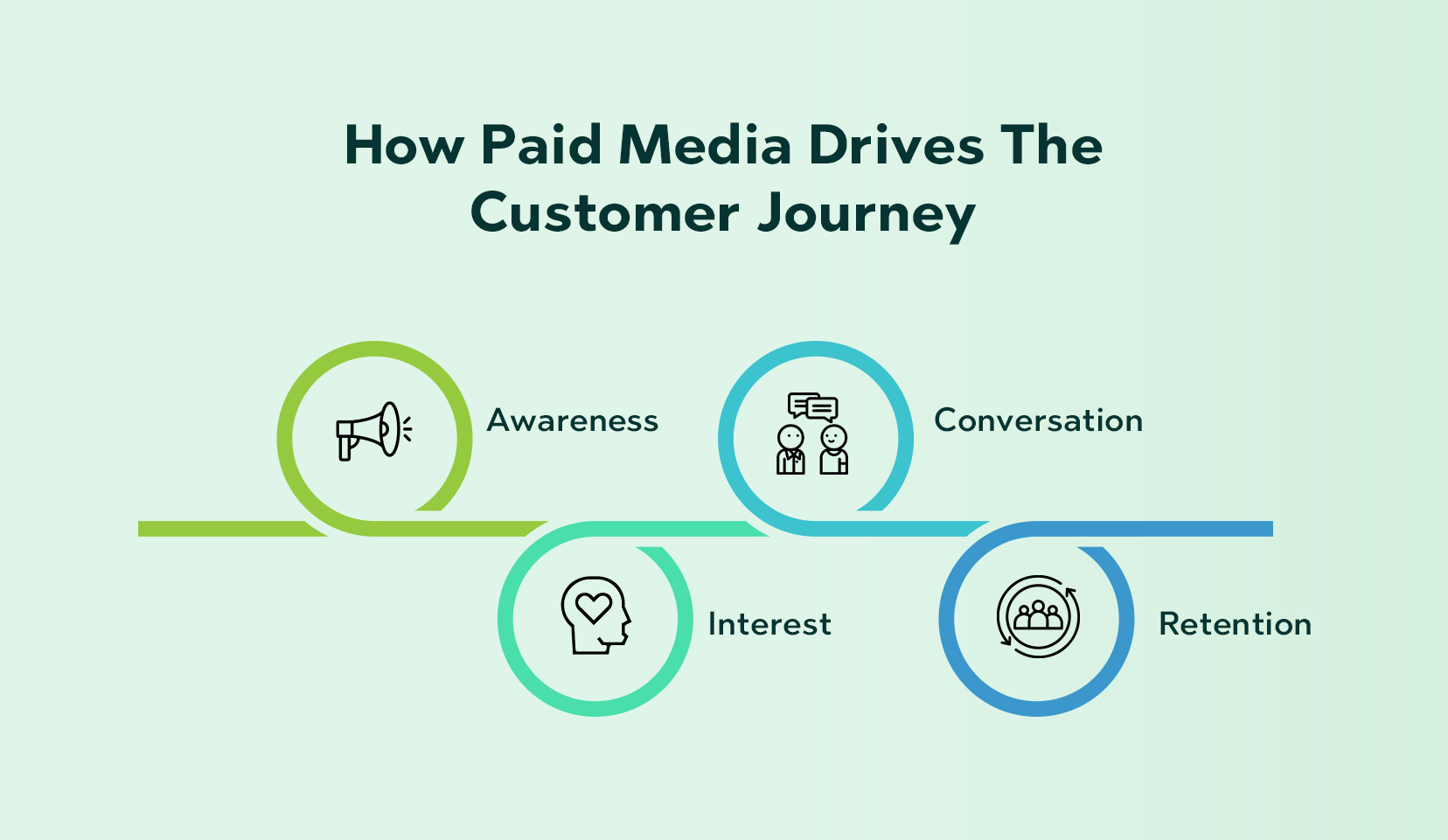
Learn how we create results-driven strategies in our full Paid Media Advertising service guide.
What makes paid media advertising so powerful?
You can get results within hours of launching. Need traffic for a product launch tomorrow? Paid media delivers.
You're not guessing. You're targeting exactly who you want to reach—down to granular behaviors and preferences.
With clear metrics and dashboards, you can see what’s working and what’s not. You don’t get that kind of clarity with traditional media.
If something’s working, double your budget. If it’s not, pause it. Paid media gives you full throttle control.
When it comes to Paid Media, not all ads are created equal. Different platforms, formats, and targeting strategies are used to reach audiences at different stages of the buyer’s journey. Understanding the types of Paid Media Advertising is key to building the right mix for your business. Let’s break down each major category.
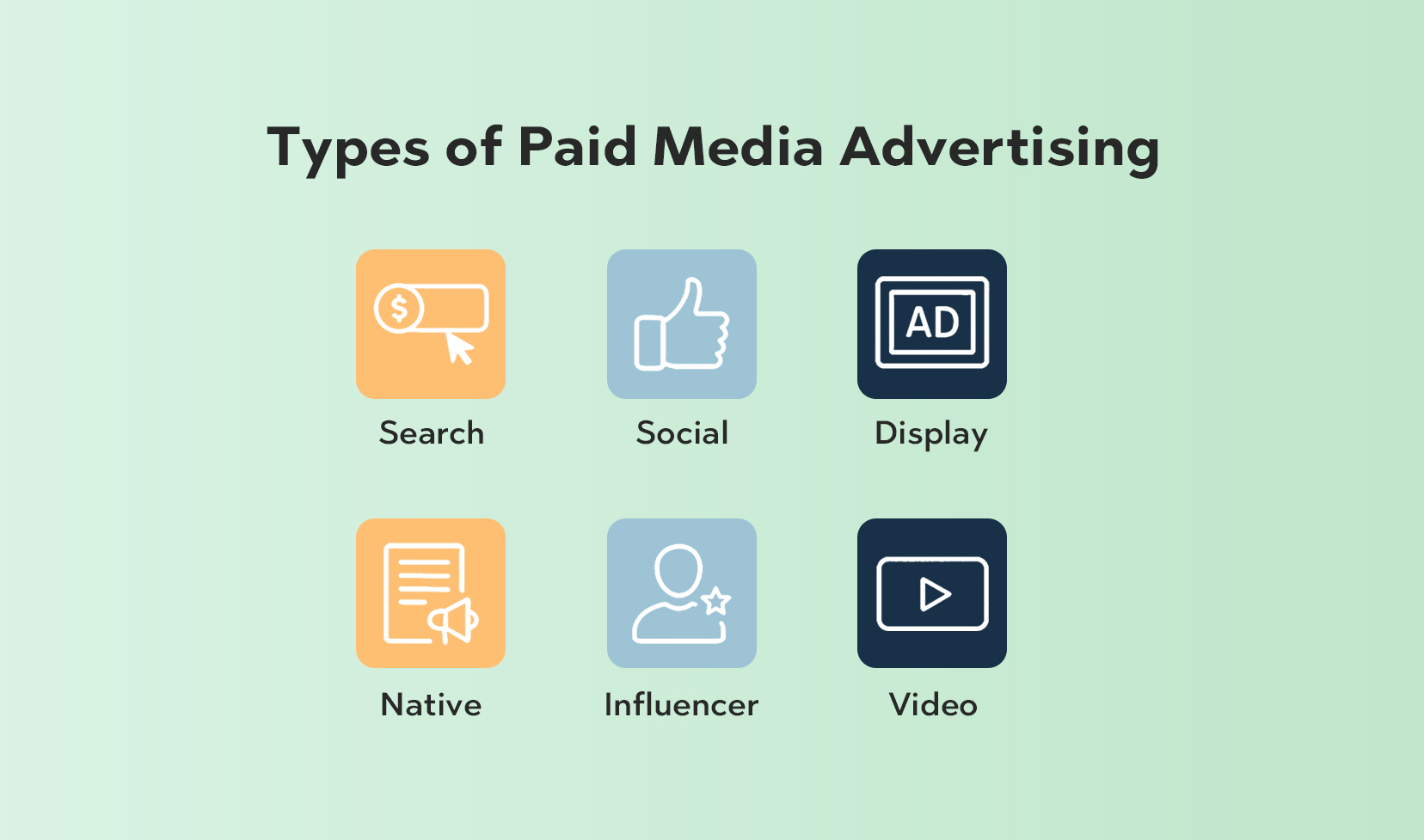
Search Engine Marketing (SEM) is a powerful form of paid advertising where you pay to have your ads appear on search engine results pages (SERPs). This is often referred to as pay-per-click (PPC) advertising.
Let’s say someone types “best coffee grinder for espresso” into Google. If you're a kitchenware retailer and you've set up a campaign targeting that keyword, your ad could show at the top of the page—even above organic results.
● Google Ads
● Microsoft Ads (formerly Bing Ads)
● Yahoo Gemini (less common but still active)
● Captures high-intent users
● Directs traffic to product pages or landing pages
● Budget-friendly for small campaigns
● Measurable down to the keyword
● You want quick traffic for a specific product or offer.
● Your organic rankings are weak.
● You’re targeting bottom-of-funnel users.
If search ads are about intent, social media ads are about connection. These are paid placements on platforms where people spend time engaging with content and communities.
● Facebook & Instagram Ads (via Meta Ads Manager)
● LinkedIn Ads (great for B2B)
● X (formerly Twitter)
● Pinterest Promoted Pins
● TikTok Ads
● Snapchat Ads
● Carousel Ads
● Story Ads
● Reels and Video Ads
● Lead Gen Forms
● Click-to-Messenger or WhatsApp Ads
● Incredibly detailed targeting (interests, behaviors, custom audiences)
● Visually engaging formats
● Integrates well with organic content
● Ideal for mid-funnel nurturing
● You’re launching a new product.
● You want to retarget website visitors.
● You’re running a lead generation campaign.
● You're promoting visual content or stories.
Learn how our Paid Media Advertising services leverage advanced social ad strategies.
Display advertising refers to visual banner ads that appear across websites, apps, and platforms. These can be static, animated, or interactive, and they show up as part of a broader ad network.
● News sites like CNN or Forbes
● Weather apps
● Blog sidebars or headers
● Within mobile apps
Today, most display ads are programmatic, meaning ad placements are bought and sold in real-time via automated platforms based on your audience’s behaviors, demographics, or content consumption.
● Great for brand awareness
● Supports retargeting
● Wide reach
● Highly customizable visuals
● Banner blindness (users ignoring ads)
● Low click-through rates if targeting isn’t optimized
Native advertising blends seamlessly with the content around it. It’s designed to look and feel like a part of the page—whether it’s a news article, product recommendation, or blog post.
● Sponsored posts on news websites (e.g., Forbes, BuzzFeed)
● Recommended for You” content at the bottom of articles
● In-feed content on LinkedIn or Instagram that says “Sponsored”
● Doesn’t interrupt user experience
● Builds trust through contextual relevance
● Performs better on mobile than traditional banners
● You want to drive traffic to a valuable piece of content.
● You want to promote thought leadership or storytelling.
● You’re aiming for soft conversions or brand familiarity.
Influencer marketing is technically a form of paid media when money, products, or other compensation is exchanged. Brands pay influencers to create content featuring their products or services.
● Sponsored Instagram posts or Stories
● YouTube product reviews
● TikTok collaborations
● LinkedIn endorsements from thought leaders
● Builds credibility quickly
● Reaches niche audiences
● Amplifies word-of-mouth
● Great for UGC (User Generated Content)
● Vet influencers carefully for alignment and authenticity.
● Always follow platform and legal disclosure rules
● Track performance with affiliate links or promo codes
Video is booming—and it’s not slowing down anytime soon. Video ads allow you to visually communicate your brand message, demo your product, or tell a story in a dynamic way.
● YouTube Ads (pre-roll, mid-roll, discovery)
● Instagram Reels Ads
● Facebook In-Feed Video
● Connected TV (CTV) ads
● Strong emotional and visual impact
● Better engagement than static ads
●Can explain complex ideas quickly
● High shareability
● Launching a new brand or product
● Telling a compelling brand story
● Creating explainer content
With affiliate advertising, you pay partners (affiliates) a commission when they drive a desired action—like a sale or lead. It’s performance-based and cost-effective.
You partner with a niche blogger who writes a review of your product. They include a unique tracking link. Every time someone clicks and buys? They get a cut.
● ShareASale
● CJ Affiliate
● Impact
● Rakuten Marketing
● Only pay for results.
● Scalable with multiple affiliates
● Builds relationships with content creators
● Requires management and fraud protection
● Lower margins if not negotiated well
Ad Type | Best For | Platform Examples |
|---|---|---|
Search Ads (SEM/PPC) | High-intent traffic, quick wins | Google, Bing |
Social Media Ads | Engagement, retargeting, lead gen | Facebook, LinkedIn, TikTok |
Display Ads | Brand awareness, retargeting | Google Display Network, DSPs |
Native Ads | Content promotion, seamless UX | Outbrain, Taboola, in-feed native |
Influencer Marketing | Niche targeting, trust building | Outbrain, Taboola, in-feed native |
Video Ads | High engagement, storytelling | YouTube, Reels, TikTok, CTV |
Affiliate Ads | Performance-driven growth | ShareASale, CJ, Impact |
There’s no “one-size-fits-all” strategy here. The best types of Paid Media Advertising depend on:
● Your goals (awareness, leads, sales)
● Your budget
● Your target audience
● Your industry
Start small, test different formats, and scale what works. For example:
● A SaaS company might find LinkedIn Ads and Google Search most effective.
● A fashion brand could see better ROI from Instagram Stories and influencer partnerships.
● An e-commerce brand may crush it with retargeting display ads and affiliate programs.
Pro tip: Combine multiple types for a full-funnel approach. Use search ads to drive initial intent, social ads to build awareness, and retargeting to seal the deal.
If you’re wondering whether paid media is really worth the investment, the answer is simple: absolutely—when it’s done right. The benefits of paid media advertising aren’t just about visibility. It's about speed, control, targeting, scalability, and measurable outcomes. Let's unpack the reasons why smart businesses invest heavily in paid media.
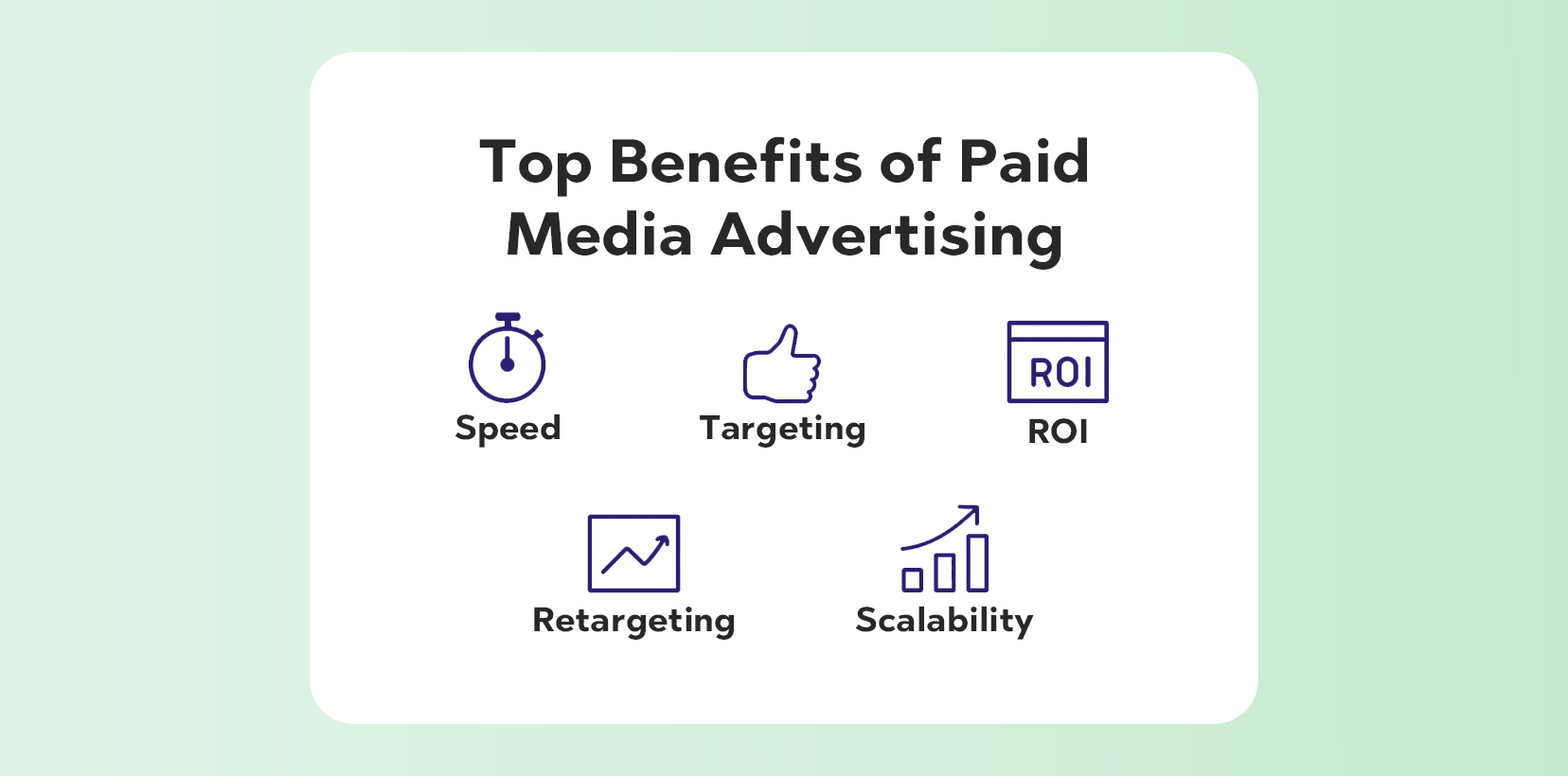
Organic strategies like SEO and content marketing are essential—but they take time. It could be 3–6 months before you see significant traction. In contrast, paid media gets you in front of your audience almost instantly.
● Launch a new product today? Run Google or Facebook ads, and you can get traffic within the hour.
● Got a flash sale? A paid Instagram Story ad can drive same-day conversions.
●Targeting a new market segment? Launch hyper-targeted LinkedIn Ads overnight.
When time is money (and let’s be real—it always is), paid media helps you skip the line and go straight to your audience.
A SaaS startup planning a webinar wants to fill 500 seats in two weeks. Relying on email and social posts alone? Risky. With a well-targeted paid LinkedIn campaign aimed at job titles in their niche, they hit their goal in 5 days.
If you’ve ever boosted a post and felt like it disappeared into the void, you’re not alone. The key to paid media success is precision targeting — and modern platforms deliver this in spades.
● Demographics (age, gender, income)
● Geographic targeting (city, country, zip code)
● Device targeting (mobile vs desktop)
● Interests and behaviors (fitness lovers, travelers, B2B buyers)
● Custom audiences (email list uploads)
● Lookalike audiences (people similar to your customers)
● Intent signals (search queries, page visits, cart abandonment)
You’re not shouting into a crowd—you’re whispering into the ear of someone already interested.
A DTC skincare brand runs Facebook ads targeting women aged 25–40 in urban India who follow wellness influencers. The ad copy addresses skincare struggles related to urban pollution—and it works like magic.
One of the most misunderstood benefits of paid media? You don’t need a huge budget to get started. Whether you’re working with $100 or $100,000, you can tailor your strategy to fit.
● Start small, test, optimise, and increase investment only in top-performing campaigns.
● Set daily or lifetime budgets.
● Control how much you spend per click, lead, impression, or conversion. ● Pause underperforming ads at any time without penalty.
Paid media puts financial control in your hands. Unlike TV, radio, or print—which require huge upfront investments—digital ads scale with your needs and results.
Start with a $10/day campaign targeting a very specific audience. Run A/B tests on creatives and headlines. Once one ad outperforms, scale that version while ditching the rest.
In traditional marketing, it’s challenging to connect the dots between campaigns and conversions. With paid media? Everything is trackable.
● Impressions
● Click-through rates (CTR)
● Cost-per-click (CPC)
● Cost-per-acquisition (CPA)
● Conversion rate
● Return on ad spend (ROAS)
● Engagement metrics (likes, shares, comments)
● Bounce rate and time on site (via analytics)
● Attribution (first-click, last-click, multi-touch)
These numbers tell you what’s working—and what’s wasting your money.
Curious how performance-based metrics tie into a strategic campaign? Learn more in our Paid Media Advertising services.
Paid and organic are not competitors—they’re partners. Paid media amplifies the impact of your content strategy and helps it gain traction faster.
● Use paid social to promote blog content and generate backlinks.
● Use retargeting ads to bring back readers who didn’t convert the first time.
● Use search ads to get visibility while your SEO rankings build over time.
● Boost high-performing posts to turn organic winners into conversion machines.
This cross-channel synergy gives your audience multiple brand touchpoints, increasing the chance they’ll engage, trust, and buy.
You might think paid media is only about conversions. But don’t underestimate its value for branding—especially in crowded markets.
Whether it’s YouTube pre-rolls, LinkedIn Sponsored Content, or native ads on industry blogs, seeing your brand consistently:
● Builds recognition
● Increases credibility
● Positions you as a leader
Even if they don’t click immediately, repeated exposure keeps you top-of-mind when the buying decision happens.
Ever visited a product page and suddenly started seeing that product everywhere? That’s retargeting—a key superpower of paid media.
● Bring back cart abandoners.
● Re-engage blog readers who didn’t opt in
● Nurture cold leads over time
● Upsell to existing customers
Retargeting creates a second chance to convert, which often drives the highest ROI of any campaign.
No marketing strategy should rely on gut instinct alone. With paid media, you can test everything:
● Ad copy
● Headlines
● CTAs
● Images or video
●Targeting segments
● Devices and placements
Split-test two versions of an ad to see which one delivers more leads or sales. Learn fast. Adapt faster. And never stop optimizing.
● Consistent messaging
● Multi-touch experiences
● Stronger pipeline velocity
Paid media can meet your audience at every stage of their journey:
Funnel Stage | Paid Media Tactics |
|---|---|
Awareness | Display ads, YouTube pre-roll, native content |
Interest | Facebook carousel, LinkedIn posts, influencer content |
Consideration | Retargeting ads, case study promotions |
Conversion | Google Search Ads, product ads, lead gen forms |
Loyalty & Retention | Upsell campaigns, re-engagement emails, VIP offers |
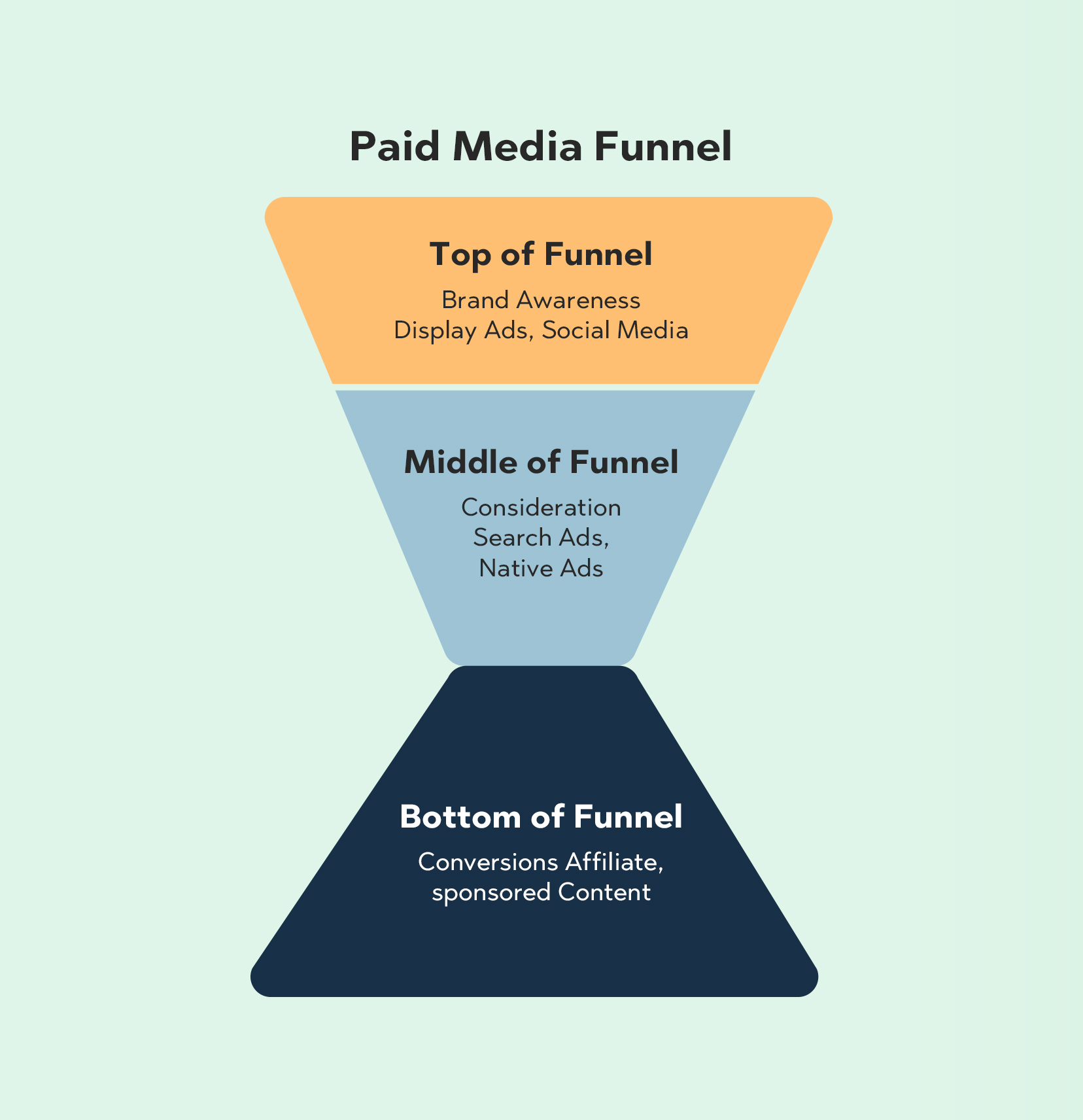
● Consistent messaging
● Multi-touch experiences
● Stronger pipeline velocity
Let’s be honest—your competitors are already doing it. If you’re not running paid campaigns, you’re leaving traffic, leads, and revenue on the table.
Even a small budget, when strategically spent, can steal attention from bigger brands if your message and targeting are on point.
Paid media levels the playing field. It rewards agility, not just deep pockets.
Paid media isn’t magic. It comes with real challenges:
● Click fraud
● Rising CPCs in competitive industries
● Ad fatigue (when creatives go stale)
● Platform rule changes
● iOS privacy limitations (affecting tracking)
But the transparency of paid media means you can see problems quickly and fix them—unlike other marketing approaches where you're left guessing.
Benefit | Why It Matters |
|---|---|
Fast Visibility | Reach your audience immediately |
Precision Targeting | Focus only on your ideal customer |
Scalable Budgets | Start small or scale fast—your choice |
Full Funnel Strategy | Guide leads from awareness to conversion and beyond |
Retargeting | Reclaim lost leads and unfinished sales |
Integrated with Organic Efforts | Makes content and SEO work harder |
Measurable ROI | Track every dollar spent and earned |
Competitive Advantage | Track every dollar spent and earned |
Continuous Learning | Optimize through data, not guesswork |
Think of paid media like a power tool. In the hands of someone who knows what they’re doing, it’s incredibly effective. You can build quickly, accurately, and at scale. Whether you’re a small startup or an established enterprise, paid media is one of the fastest, most reliable ways to grow your digital presence.
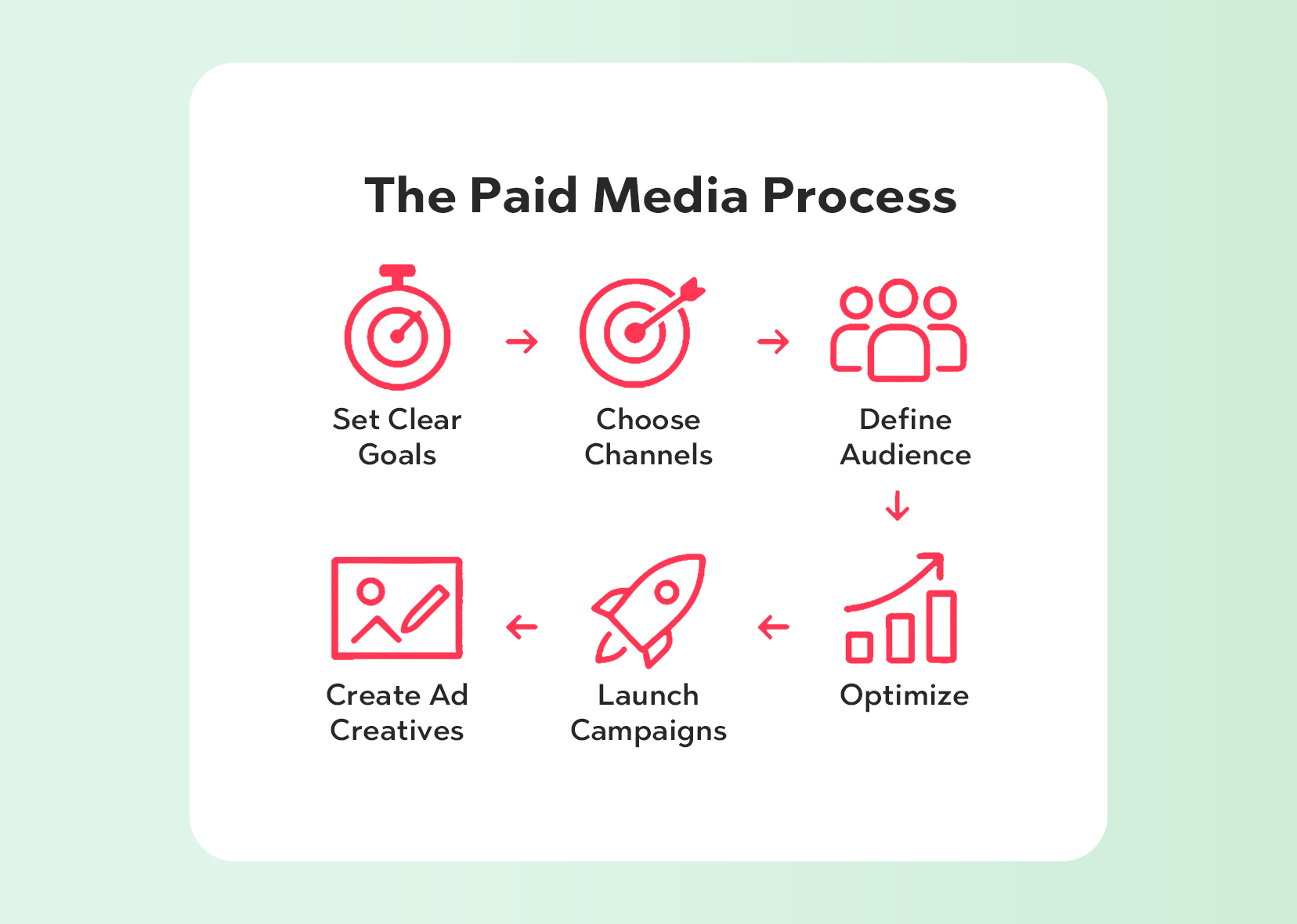
Knowing the types and benefits of paid media is great—but how do you actually build a campaign that works? A successful Paid Media Advertising Process isn’t about randomly boosting posts or throwing money at ads. It’s strategic, systematic, and driven by data.
Whether you're running your first campaign or refining your existing approach, this step-by-step framework will walk you through exactly how to launch, manage, and optimize a high-performance paid media strategy.
Before you even log into an ad manager, define your objectives. What do you want this campaign to achieve?
● Increase website traffic
● Generate qualified leads
● Drive eCommerce purchases
● Build brand awareness
● Promote an event or webinar
● Re-engage existing customers
Each goal requires a different platform, targeting method, budget, and creative. For example:
● Sales-focused campaigns should focus on bottom-of-funnel users (think: search ads).
● Awareness campaigns may be better served through video, display, or influencer content.
Set SMART goals—Specific, Measurable, Achievable, Relevant, Time-bound.
Once you know your goal, decide where to run your ads. Not every platform suits every campaign. You want to meet your audience where they already spend time.
Objective | Best Platforms |
|---|---|
Brand Awareness | YouTube, Display Ads, Instagram Reels, TikTok |
Lead Generation | Facebook Lead Ads, LinkedIn, Google Search |
Sales / eCommerce | Google Shopping, Instagram, Pinterest, Retargeting |
Thought Leadership | LinkedIn Sponsored Content, Native Ads |
Event Signups | Facebook Events, YouTube Discovery, Programmatic Video |
● B2B? → LinkedIn
● DTC Fashion? → Instagram + Pinterest
● High-value SaaS? → Google + Programmatic Display
● Local service? → Google Local Ads, Meta Lead Forms
Mix and match platforms as needed—but keep your messaging consistent across each
Targeting is the soul of paid media. Get it wrong, and even the best creative won’t save your campaign. Get it right, and even modest spend can generate incredible ROI.
● Demographics: Age, gender, education level
● Location: City, region, country, zip
● Behaviors: Shopping habits, device use, brand affinities
● Job Info: Title, industry, company size (especially for B2B)
● Intent Signals: Keywords searched, site visits, past engagement
● Custom Audiences: Based on your CRM/email list
● Lookalikes: People similar to your current customers
Most platforms also allow layered targeting—combining multiple factors for maximum relevance.
Don’t forget retargeting! Show ads to people who visited your website but didn’t convert.
Here’s where creativity meets conversion. Your visuals and messaging must speak to your audience's needs and emotions, while clearly offering value.
● Attention-grabbing headline
● Clear, compelling visual or video
● Strong CTA (Call to Action)
● Brief, benefit-focused copy
● Consistent branding across formats
● Mobile-friendly design
● Text-only search ads
● Static image display banners
● video ads (pre-roll, in-feed, reels)
● Carousel ads with multiple products
● Story ads with swipe-up links
● Lead form ads with embedded sign-up forms
Pro tip: Test at least 2–3 variations of each ad (different images, headlines, or CTAs).
You're ready to go live! But don’t just set it and forget it. Launch is only the beginning. Once your ad is active, the real work begins: monitoring and analysing.
● CTR (Click-through Rate): Are people engaging with the ad?
● CPC (Cost-per-Click): How much is each click costing?
● Conversion Rate: Are they doing what you want them to?
● Impressions vs. Reach: Is your ad being seen too often by the same people?
● Budget Spend: Is your daily cap on track?
● Frequency: Is your ad fatiguing the audience?
Use built-in dashboards from platforms like:
● Meta Ads Manager
● Google Ads
● LinkedIn Campaign Manager
● Third-party tools like HubSpot, Google Analytics, or SEMrush Make decisions based on numbers, not assumptions.
Paid media is not a one-and-done tactic. It’s iterative. You learn, tweak, and improve continuously.
● Pause underperforming ads and reallocate budget to winners
● A/B test different creatives—even minor copy changes can improve CTR.
● Adjust targeting if bounce rates are high.
● Refine your CTA to align better with the offer.
● Improve landing page performance—slow or confusing pages kill conversions.
● Retarget new audience segments based on site behavior
The most successful campaigns evolve weekly—even daily.
Once you’re comfortable with the Paid Media Advertising Process, set up always-on campaigns for:
● Brand awareness
● Lead nurture (email opt-ins, eBook downloads)
● Cart abandonment or product retargeting
● Seasonal promotions or evergreen offers
This keeps your pipeline flowing—even while you sleep.
Before you launch, double-check that you've:
Task | Status |
|---|---|
Goal defined (traffic, leads, sales) | ✅ |
Platform(s) selected | ✅ |
Target audience created | ✅ |
Ad creatives designed and uploaded | ✅ |
Landing page or offer ready | ✅ |
Conversion tracking installed | ✅ |
Campaign scheduled and budget set | ✅ |
If you miss even one step, your campaign might underperform—or worse, waste budget.
Think of launching paid media like starting a race car. Setting the GPS (goals) is the first step. You’ve got to choose your lane (channel), fill the tank (budget), pick your passengers (audience), check the dashboard (metrics), and keep your hands on the wheel (optimization). When all these elements align, paid media becomes a scalable, predictable growth engine.
Paid media has the power to skyrocket your visibility and conversions—but only if you use it wisely. Plenty of businesses make costly mistakes that drain their budget, deliver poor results, or ruin first impressions.
.jpg)
If you want to avoid that fate, study the most common paid media pitfalls—and learn how to dodge them.
The most common and painful mistake? Showing your ads to the wrong people.
It doesn’t matter how clever your copy is or how beautiful your design looks—if it lands in front of people who don’t care, you’ve wasted your money.
● Running nationwide ads when your service is local
● Targeting too broadly (e.g., “all adults 18–65+”)
● Targeting cold audiences with high-intent CTAs
● Overlapping ad sets competing for the same audience (called audience cannibalization) What to Do Instead:
● Use granular targeting: location, behavior, interests, job roles
● Create custom audiences from your CRM or email lists
● Use lookalike audiences to expand your reach intelligently.
● Segment cold, warm, and hot audiences—and match the ad creative to each
Paid media targeting is not a set-it-and-forget-it task. It’s a strategic art form. Master it.
This one’s a dealbreaker. If you’re not tracking conversions, you have no way of knowing what’s working.
And yet, too many brands:
● Launch campaigns without setting up Facebook Pixel or Google Tag Manager
● Track clicks, but not purchases or leads
● Miss data because tracking isn’t properly implemented across devices What to Do Instead:
● Set up conversion tracking before your ads go live.
● Track micro and macro conversions: newsletter signups, downloads, purchases, demo bookings
● Use UTM parameters to identify traffic sources.
● Double-check that tracking fires correctly on all browsers and devices.
● Use Google Analytics 4 (GA4) to view conversion paths and attribution.
Without tracking, you’re flying blind. With tracking, you’re steering a rocket.
Imagine this: you click a beautiful ad, excited about the offer—and land on a slow, confusing page with no clear CTA. What do you do? You bounce. And so does 90% of your traffic if your landing page sucks.
● Pages that load slowly (especially on mobile)
● Confusing design or multiple CTAs
● Walls of text with no hierarchy
● Generic content not related to the ad
● No incentive or offer matching the ad promise
● Use a dedicated landing page for each campaign or offer
● Match the headline and CTA to the ad that brought them there
● Make it mobile-first, not mobile-friendly.
● Include one clear CTA, above the fold
● Minimize distractions: no menus, popups, or outbound links
Your ad gets the click. Your landing page seals the deal.
An ad creative is your brand’s digital handshake. If it looks lazy, sounds boring, or feels irrelevant—you’ve lost trust before you’ve even said hello.
● Stock photos that feel inauthentic
● Wordy or jargon-filled ad copy
● Clickbait-style headlines that mislead
● Not adapting creatives to each platform’s best practices
● Speaks to a pain point or desire
● Uses emotion and storytelling
● Has a clear visual hierarchy
● Reflects your brand personality
● Features people, real products, or real outcomes
● Includes movement (e.g., GIFs or videos) for scroll-stopping power
Pro Tip: Test 2–3 variations of creative per campaign. Let performance guide what stays.
This mistake is about complacency. You run one ad set, don’t touch it, and hope for the best. But here’s the thing—paid media thrives on iteration.
● Your first ad is almost never your best
● Audiences respond to different hooks, visuals, or formats.
● Testing reveals your winners—and your money-wasters.
● Headlines
● CTA buttons
● Visual styles (photo vs illustration vs video)
● Targeting segments
● Ad formats (carousel vs single image vs video)
● Landing page versions Every test gives you data. Every insight improves ROI.
Paid ads aren’t crockpots. You can’t just set them and forget them. The digital landscape changes daily—and so should your optimisation strategy.
● Your frequency is too high, and users are burning out.
● Your CPC is creeping up, and no one’s adjusting bids.
● Ads with low engagement are still active
● Creative fatigue is killing conversion.Better Habits:
● Check performance metrics weekly, if not daily.
● Pause or refresh ads that have a frequency greater than 2.5 without conversions.
● Rotate creatives every 10–14 days to avoid banner blindness.
● Use rules and automation to optimize campaigns at scale.Paid media is a living thing. Feed it, watch it, and course-correct often.
Another silent killer: showing the wrong offer to the wrong stage of the buyer journey.
For example:
● Showing a “Buy Now” CTA to a cold audience who’s never heard of you
● Offering a free guide to users who have already converted
● Pushing feature-heavy messaging to someone still exploring the categoryBetter Approach:
● Top of Funnel (TOFU) → Focus on value content, guides, or brand video
● Middle of Funnel (MOFU) → Use retargeting with testimonials, case studies
● Bottom of Funnel (BOFU) → Drive direct sales, consultations, or demosRelevance = Results. Match the message to the moment.
Throwing money at ads with no structure is a quick way to drain your wallet. Just because you “boosted a post” doesn’t mean you’ve run a paid media campaign.
● Spending evenly across all platforms, instead of prioritizing winners
● Ignoring seasonality or customer behavior trends
● Not adjusting budgets based on performance
● Underinvesting in high-performing campaigns due to fear
● Allocate 70% to proven campaigns, 20% to new experiments, and 10% to moonshots.
● Increase investment in top-performing audiences or creatives
● Watch your cost-per-result daily, and act fast if it spikes.
● Build campaign calendars to prep for launches, holidays, and slow seasons.
Paid media should be ROI-positive, not expensive. Strategy makes the difference.
Mistake | Consequence | Fix |
|---|---|---|
Poor targeting | Low relevance, high costs | Use audience segmentation and intent signals |
No conversion tracking | No ROI visibility | Set up pixel, events, and UTM tracking |
Weak landing page | High bounce rate, low conversions | Build optimized, mobile-first pages |
Low-quality creative | Poor engagement | Use scroll-stopping visuals and messaging |
No testing | Wasted budget, missed opportunities | Run A/B tests and iterate |
Set-it-and-forget-it campaigns | Ad fatigue, inefficiency | Monitor and optimize regularly |
Misaligned offer | Confused audience, low CTR | Match CTA to funnel stage |
Budgeting without a plan | Inconsistent performance | Allocate based on goals and past results |
Every digital advertiser makes mistakes—especially in the early stages. What separates smart marketers from struggling ones is their willingness to learn, test, and improve. The most common paid media mistakes are completely avoidable when you:
● Set strategy before spending
● Track everything
● Create with purpose
● And constantly optimize
Your campaigns don’t have to be perfect. They just need to be better every week.
In digital marketing, no channel lives in a vacuum. To run a well-rounded strategy, you need to understand how Paid Media compares—and connects—to Owned Media and Earned Media.
All three serve different purposes. When used together, they create a powerful, integrated ecosystem that boosts awareness, builds trust, and drives conversions.
Let’s break it all down.
Here’s a quick refresher:
Advertising that you pay for. You buy placements to drive visibility, traffic, or conversions. Examples:
● Google Ads
● Facebook and Instagram Ads
● Sponsored posts
● YouTube pre-rolls
● Influencer promotions
Assets you fully control. You created them, you manage them, and you decide what goes on them. Examples:
● Website or blog
● Email newsletter
● Landing pages
● Mobile app
● Social media profiles
Attention you earn without paying. Think of it as digital word-of-mouth. Examples:
● Media coverage
● Customer reviews
● Social media shares
● Forum mentions
● Influencer shoutouts (unsolicited)
Aspect | Paid Media | Owned Media | Earned Media |
|---|---|---|---|
Control | High (you control message & timing | Full (you own the channel) | Low (others shape the message) |
Cost | Ongoing (pay-per-click/impression) | Upfront & maintenance costs | No direct cos |
Speed of Results | Immediate | Medium to long term | Unpredictable |
Credibility | Medium (seen as ads) | High (trusted if well-built) | Very High (third-party validation) |
Scalability | High (just add budget) | Moderate | Limited (depends on external buzz) |
Longevity | Short (stops when you stop paying) | Long-lasting | Varies |
Examples | Google Ads, FB Ads, Influencer posts | Blog, Email list, Website | Reviews, PR, Social shares |
The smartest marketers don’t pick one over the other—they blend all three. Here’s when and how to use each:
Use when you need scale, speed, and targeting. Great for:
● Launching new products
● Driving traffic to new pages
● Testing new offers or messages
● Retargeting users
● Scaling proven funnels
Use to build trust, authority, and brand control. Great for:
● Long-term SEO
● Email nurturing
● Brand storytelling
● Customer support and education
Use as social proof and validation. Great for:
● Amplifying reach without paying
● Boosting credibility and trust
● Creating viral loops
● PR and thought leadership
Imagine launching a new app. Here’s what an integrated media strategy might look like:
Phase | Paid Media | Owned Media | Earned Media |
|---|---|---|---|
Pre-Launch | Instagram teaser ads, YouTube video ads | Launch landing page, email waitlist | Buzz from beta testers or early influencers |
Launch | Google App Install ads, Facebook campaigns | Full app site, demo videos, product walkthrough | Media mentions in tech blogs |
Post-Launch | Retargeting ads, promo code campaigns | Blog content, feature updates, tutorials | User reviews, UGC, YouTube app reviews |
By combining all three, you're not just generating traffic—you're building a brand.
Let’s be honest: earned and owned media are powerful, but they take time. You can’t control when people leave a review or share your content. And your blog won’t rank overnight.
That’s where paid media comes in.
● Paid traffic supports a brand new blog post until SEO kicks in.
● Paid social boosts organic content so more people see it.
● Paid retargeting revives traffic that didn’t convert on first visit.
Think of paid media as the fuel—owned media as the vehicle, and earned media as the wind in your sails.
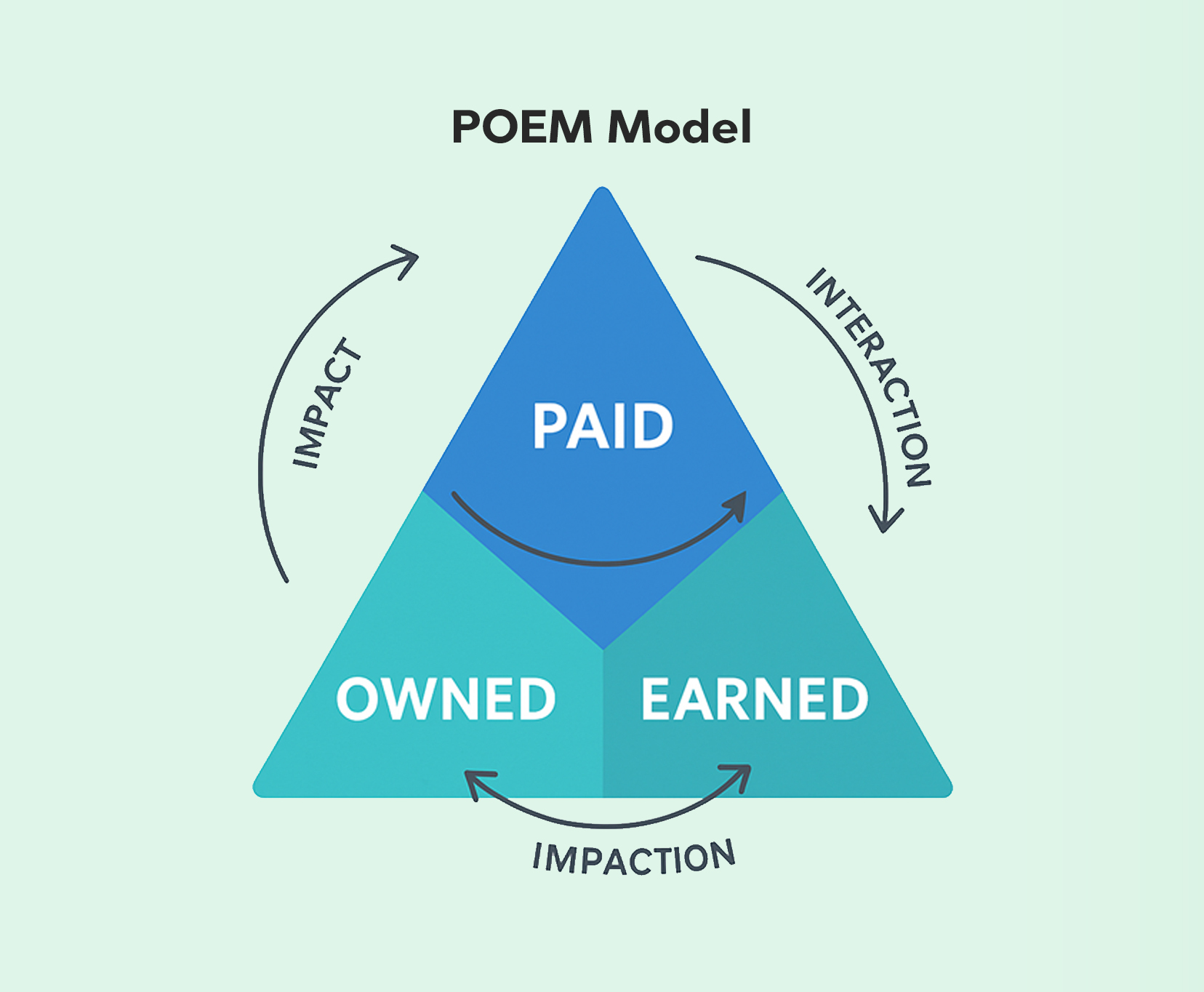
(Paid, Owned, Earned Media)
This model helps you think holistically about content distribution.
Let’s say you publish a 30-page eBook on “The Future of Digital Marketing.”
● Owned: You host the download on a sleek landing page and promote via email.
● Paid: You run LinkedIn Sponsored Content + Facebook Lead Ads to capture new contacts
● Earned: A few industry influencers share it and backlink from their blogs
This gives you:
● Immediate leads (from paid)
● Long-term SEO value (from owned)
● Social proof and credibility (from earned)
It’s the perfect trifecta.
● You’ll get short-term traffic, but it stops when your budget dries up
● You may struggle to build loyalty and trust.
● ROI suffers without a strong owned ecosystem.
● You may struggle to attract traffic.
● Your best content stays hidden.
● Growth is slow, especially in competitive industries
● Unpredictable and hard to scale
● You can’t guarantee when/if others will talk about you.
● It doesn’t drive direct response reliably.
Goal: Drive demo bookings for a new HR software
Media Type | Tactic |
|---|---|
Paid | Google Ads for keywords like “best onboarding software” |
Owned | Landing page with explainer video, FAQs, and demo form |
Earned | Case study featured in HRTech blog + customer reviews on Capterra |
Result:
● 3x traffic
● 40% increase in demo requests
● Strong SEO value that continues after the ad budget slows
To see how this model fits into a real-world strategy, check out our full Paid Media Advertising services page.
You Should Invest In... | If You Want To... |
|---|---|
Paid Media | Drive fast traffic and measurable ROI |
Owned Media | Build long-term authority and brand presence |
Earned Media | Gain trust, reach, and social proof |
All Three (POEM Model) | Build a sustainable, scalable, high-impact digital marketing machine |
You don’t have to choose between paid, owned, or earned media. The most successful brands use all three. Paid media gives you speed and reach. Owned media gives you control and permanence. Earned media gives you validation and exposure.
But when they work together? That’s when your brand becomes unstoppable.
So, what is paid media advertising really?
By now, you know it’s far more than just pushing out Facebook ads or tossing a few bucks at Google. It’s a powerful, flexible tool that—when used right—can drive traffic, grow your audience, generate leads, and scale your business fast.
Whether you’re a small startup or a global brand, paid media gives you control over your visibility, unmatched targeting precision, and measurable results.
Let’s wrap it all up and bring the whole picture into focus.
In plain terms, paid media advertising is when you pay to place your message in front of your audience. It includes:
● Search ads on Google and Bing
● Social media ads on Facebook, Instagram, LinkedIn, and more
● Display banners, video ads, affiliate marketing, and influencer partnerships
● Every format where money exchanges hands for attention, clicks, or conversions
And it’s not just about visibility—it’s about the intentional use of data and creative to drive action.
We live in a world of algorithmic chaos and short attention spans. Brands can’t afford to wait around hoping to go viral or rank on page one of Google someday.
With paid media, you get:
● Immediate access to your ideal customers
● Data-rich insights to make better decisions
● Scalable campaigns that grow with your business
● Precise control over your brand’s message and positioning
Whether you’re launching a product, generating leads, or building awareness, paid media can cut through the noise faster than any other channel.
Starting your paid media journey? Here are essential tips to help you launch smart, avoid waste, and grow with confidence:
You don’t need ₹10 lakh to begin. Even a small test budget can uncover what works.
● Begin with ₹500–₹1,000/day on a focused campaign
● Pick one or two platforms—don’t spread too thin
●Target your warmest audience first (email list, past visitors).
● Watch every rupee. Optimize ruthlessly.
Cold traffic? Don’t lead with “Buy Now.” Instead, offer value first.
Funnel Stage | Messaging Strategy |
|---|---|
Awareness | Introduce the problem or story |
Consideration | Explain your solution, share testimonials |
Conversion | Show urgency, discounts, and CTAs like “Buy Now” |
Don’t guess—test.
● Run A/B tests on headlines, CTAs, and creative formats.
● Split-test different landing pages
● Test new targeting segments monthly.
● Watch for trends in engagement and ROAS.
Remember: what worked last month might flop today.
Your ad might win the click—but your landing page wins (or loses) the conversion.
Make sure your landing page:
● Loads fast (especially on mobile)
● Matches the ad’s promise
● Has one clear CTA
● Is distraction-free and easy to scan
Consider tools like Unbounce, Instapage, or Webflow for clean, high-converting designs.
If you’re not measuring, you’re not marketing. Install:
● Google Analytics 4
● Google Tag Manager
● Meta Pixel or LinkedIn Insight Tag
● UTM links on every ad
Track:
● Conversions
● Source of traffic
● Cost per lead/acquisition
● Funnel drop-offs
These numbers are your fuel for optimization.
Paid media works best when it doesn’t work alone.
● Boost blog posts to jumpstart organic SEO
● Retarget email list subscribers who didn’t convert
● Use influencer UGC (earned) in your Facebook Ads (paid).
● Promote your best webinar or whitepaper (owned) via LinkedIn Sponsored Posts (paid).
Think like a conductor. Make all the media types play together.
Yes, you can get results in 24 hours. But the real value of paid media is long-term learning and scaling.
● You’ll learn what messaging resonates.
● You’ll build high-converting landing pages.
● You’ll gather enough data to make better decisions.
● You’ll identify which platforms deliver real ROI.
Every campaign teaches you something. Every mistake sharpens your future results.
Let’s bring it home.
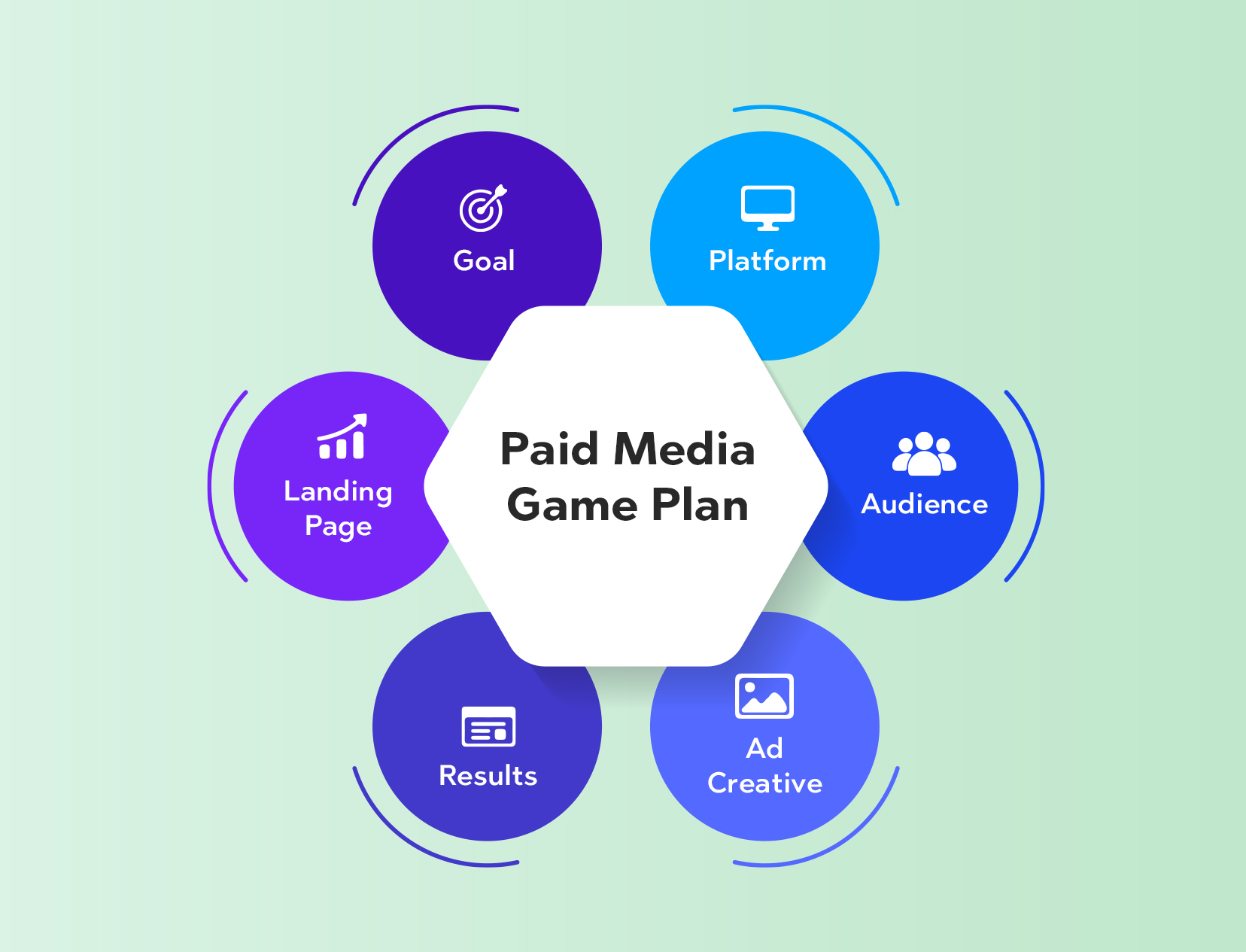
Component | Key Insight |
|---|---|
Clear Goals | Know exactly what you want from every campaign |
Platform Fit | Choose the right channel for your audience and objective |
Targeting Strategy | Go deep—not broad. Use behavior, interest, and intent data |
Great Creative | Ads that inform, entertain, and convert |
Landing Page Alignment | Match ad promise to page experience |
Conversion Tracking | Know your numbers. Every rupee should be traceable |
Ongoing Optimization | Campaigns are living things—tweak, test, and improve weekly |
Whether you're:
● Launching your first Google campaign
● Retargeting past visitors with a carousel ad
● Running influencer UGC on Reels
● Or scaling a multi-platform strategy…
Paid media is the most versatile and controllable growth lever in your digital toolkit.
Don’t overthink. Start lean. Test everything. Optimize often. And remember:
“Money doesn’t buy great marketing—strategy does.”
Ready to skip the guesswork and start scaling with purpose? Explore our Paid Media Advertising services to see how PulsePlay Digital can help you build and execute winning ad strategies across search, social, and beyond.
It’s when you pay to promote your brand via ads—search, social, video, or influencers.
Paid = fast, controlled, scalable. Organic = free, slower, builds over time. Use both.
● Google: Search intent
● FB/IG: Visual + lead gen
● LinkedIn: B2B
● YouTube: Awareness
● TikTok/Pinterest: Trends and lifestyle
Yes. Start with ₹500–₹2,000/day. Target locally, test, track, scale.
Paid = fast, test-friendly, high control SEO = long-term, builds trust Together = best results
Track CPC, CPL, ROAS, CAC using GA4, Ads Manager & UTM links.
By interests, behaviour, job title, device, location, and custom/lookalike audiences.
Search = intent-driven Social = discovery + awareness Use both based on funnel stage
Poor targeting, no tracking, bad creative, slow pages, zero testing, mismatched offers.